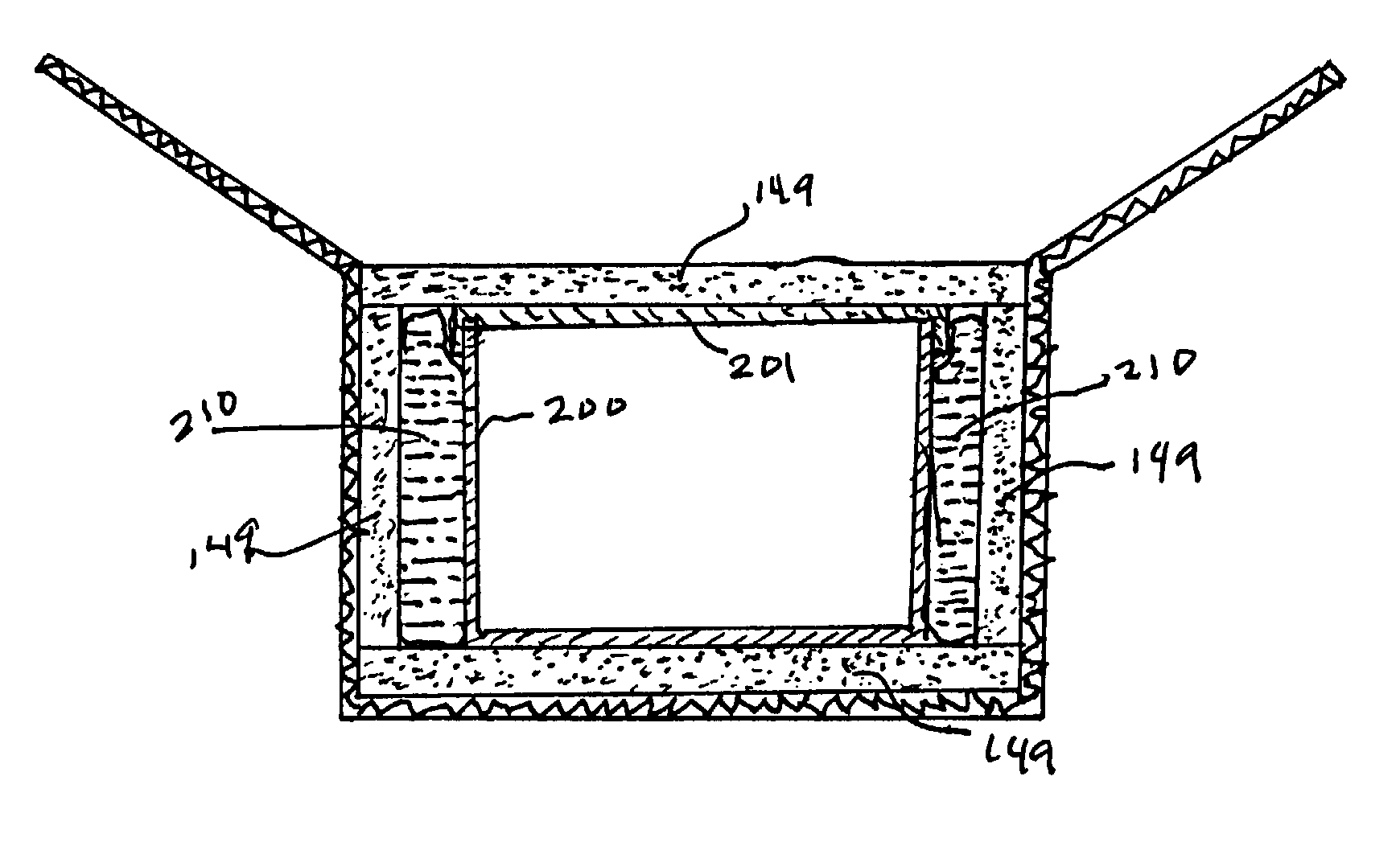Container having passive controlled temperature interior
a technology of temperature control and container, which is applied in the direction of domestic cooling equipment, lighting and heating equipment, transportation and packaging, etc., can solve the problems of difficult transportation of temperature-sensitive goods, inability to reliably identify the internal temperature range which might be encountered in testing, and high cost of production, etc., to achieve the effect of close interior temperature control and low cos
- Summary
- Abstract
- Description
- Claims
- Application Information
AI Technical Summary
Benefits of technology
Problems solved by technology
Method used
Image
Examples
Embodiment Construction
[0012]Referring first to FIG. 1, there is shown an insulating container of the type known in the prior art. An outer carton 10 may be made from corrugated cardboard or the like. Inserted snugly into the outer carton 10 is a top and bottom insulating panel 12, and four side insulating panels 14. All insulating panels may be constructed of Styrofoam or the like, or any material having good insulation qualities, ie., having a high thermal resistance “R”. The article to be shipped is typically placed in the interior volume 16 which is inside the inner insulating panels 14 and the top and bottom insulating panels 12, and then the carton is sealed and shipped. If extra cooling is desired, it may be necessary to also enclose a packet of cooling material such as ice, which gradually melts during the shipping transit time as heat is absorbed into the carton from outside, and the ice is transformed from a solid material to a liquid. It is preferable that the ice be carried inside a waterproof...
PUM
 Login to View More
Login to View More Abstract
Description
Claims
Application Information
 Login to View More
Login to View More - R&D
- Intellectual Property
- Life Sciences
- Materials
- Tech Scout
- Unparalleled Data Quality
- Higher Quality Content
- 60% Fewer Hallucinations
Browse by: Latest US Patents, China's latest patents, Technical Efficacy Thesaurus, Application Domain, Technology Topic, Popular Technical Reports.
© 2025 PatSnap. All rights reserved.Legal|Privacy policy|Modern Slavery Act Transparency Statement|Sitemap|About US| Contact US: help@patsnap.com



